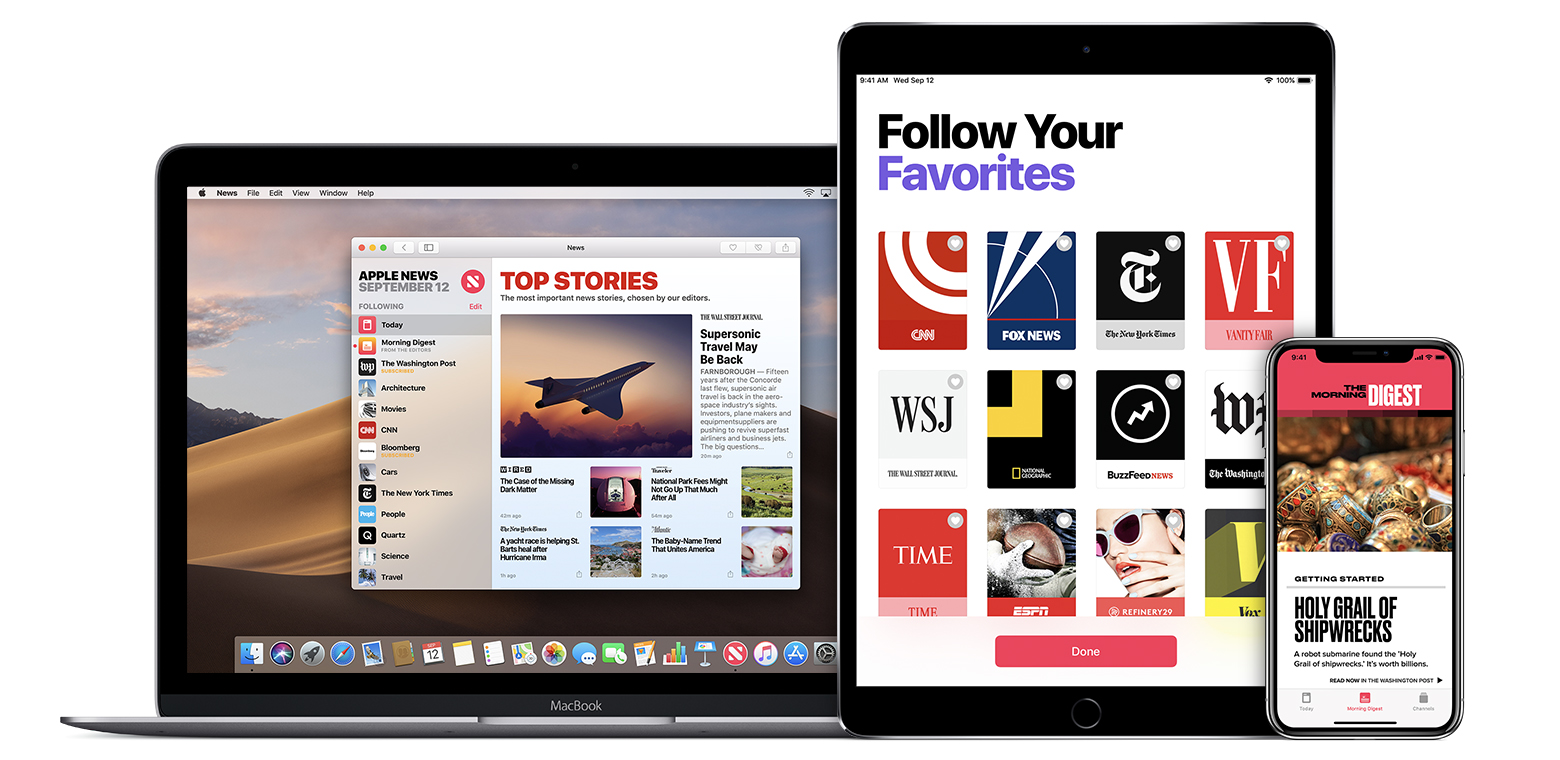The next tech ‘solution’ for the news industry seems to be coming from Cupertino, California. Apple wants to launch a subscription service for news, what the media is calling “Netflix for news”. The tech company would require a flat monthly subscription fee—estimated to be around $10—in exchange for access to an unlimited number of articles from a variety of news outlets. That is bundled media. It sounds great, so what’s the catch?
Apple’s iPhone sales are slowing down, and the tech company is actively looking for other sources of revenue. Thus, it is no surprise that Apple wants to take a 50% cut of the subscription revenue from the new service. The rest of the subscription income would be divided among the publishers, that put their content in the service, depending on the amount of time readers spend on their articles. The business model has more to do with Spotify than with Netflix.
For most media companies, 50% is too much, especially for those that already have successful subscription models in place. The Wall Street Journal recently reported that some publishers are reticent when it comes to sharing their content with the tech giant. The New York Times and The Washington Post, which have a strong subscriber base, are among them.
But it is not only a high percentage. Media publishers are wary of what tech companies call a ‘solution’ for journalism. They have already trusted them, and they have already failed. At first, they published their content on Facebook and Google hoping to play their game. The upsides were felt fast: they reached larger audiences and they got some traffic to their websites. But when Facebook changed its algorithms, they were the ones more deeply affected. They lost visibility, and thus, advertising revenues.
A conclusion stuck in the media industry: tech companies control the delivery, so it’s always their rules. If they want, they can change them in a minute. As Frank Bennack, executive vice-chairman of Hearst Corporation said in a presentation at IESE in New York: “Content is king, but distribution is King Kong.”

Unlike Facebook and Google, Apple has stayed more at bay when it comes to meddling in the media business. The firm launched its Apple News service in 2015, an aggregator in which the user can choose to read stories either by outlets or topics. After being able to read a few lines, the reader is sent to the site’s original content, although consumers rarely leave the app to visit the news-site and are satisfied with the headline and the beginning of the article. Now, in their next step, where Apple will certainly keep the readers, they will have to face the media’s concern.
News outlets get their digital revenues from subscriptions and digital advertising. Most do not have strong subscription models, so digital advertising is their main source of income. Joining Apple could mean getting more views on their articles, and access to more readers. But if publishers agree to put their content on this new Apple service, they will probably lose their access to subscriber data and, maybe, traffic to their website.) Without data, advertisers will look for other sites to target their audiences.
Moreover, subscription revenues from the Apple service may not be enough to support the outlets. Apple will distribute them depending on user engagement, so companies will fight to the death for that little bit of attention that can turn into one dollar more. Plus, if the consumer has already subscribed to Apple, why would it have an additional subscription with a specific news outlet? Why pay for one newspaper when you can have 50 (for example) for the same price?
The obvious upside of using this new device is Apple’s reach. According to Business Insider, 60% of smartphones sold in the US are iPhones. Worldwide, there are 1.3 billion active Apple devices. As with podcast distribution, Apple has the benefit of offering the preferred apps by default. It is just easier to listen to a podcast on Apple’s app—already on the iPhone—than to download an entirely new one. The tech company’s reach is unparalleled, so small news outlets can definitely benefit from Apple’s initiative, especially if they are already hurting.
With this initiative, Apple may offer a new business model for news organizations. But if it’s only with the proposed revenues, it could make them shrink. The safest way to ensure the survival of a news outlet is power over delivery: consumer data. And that will disappear with this solution by the Cupertino-based company.
Josep Valor and Carmen Arroyo


